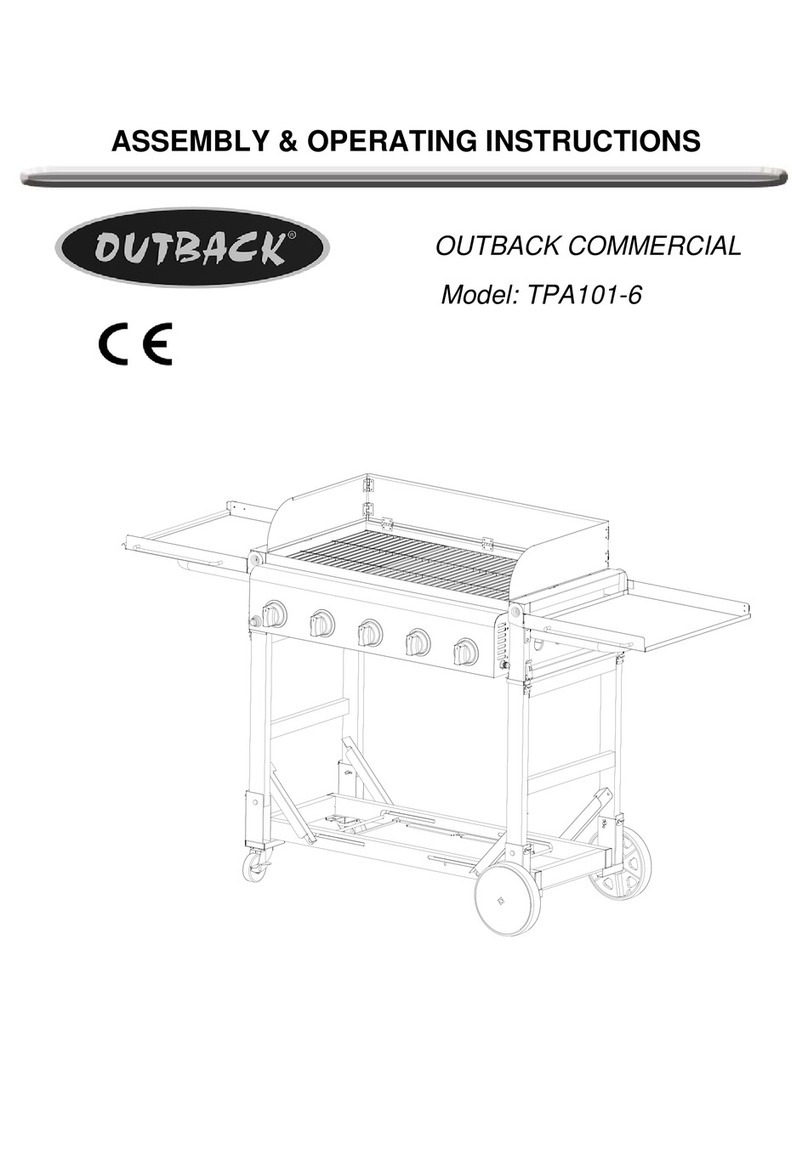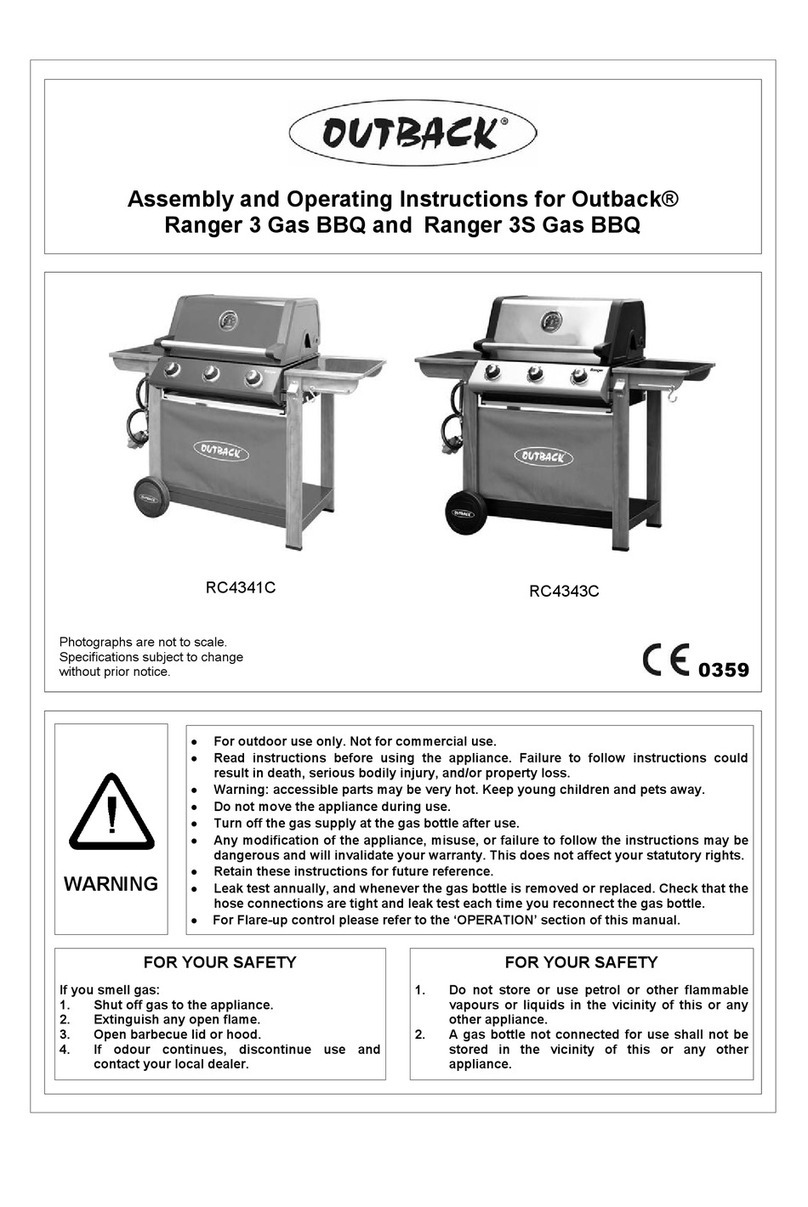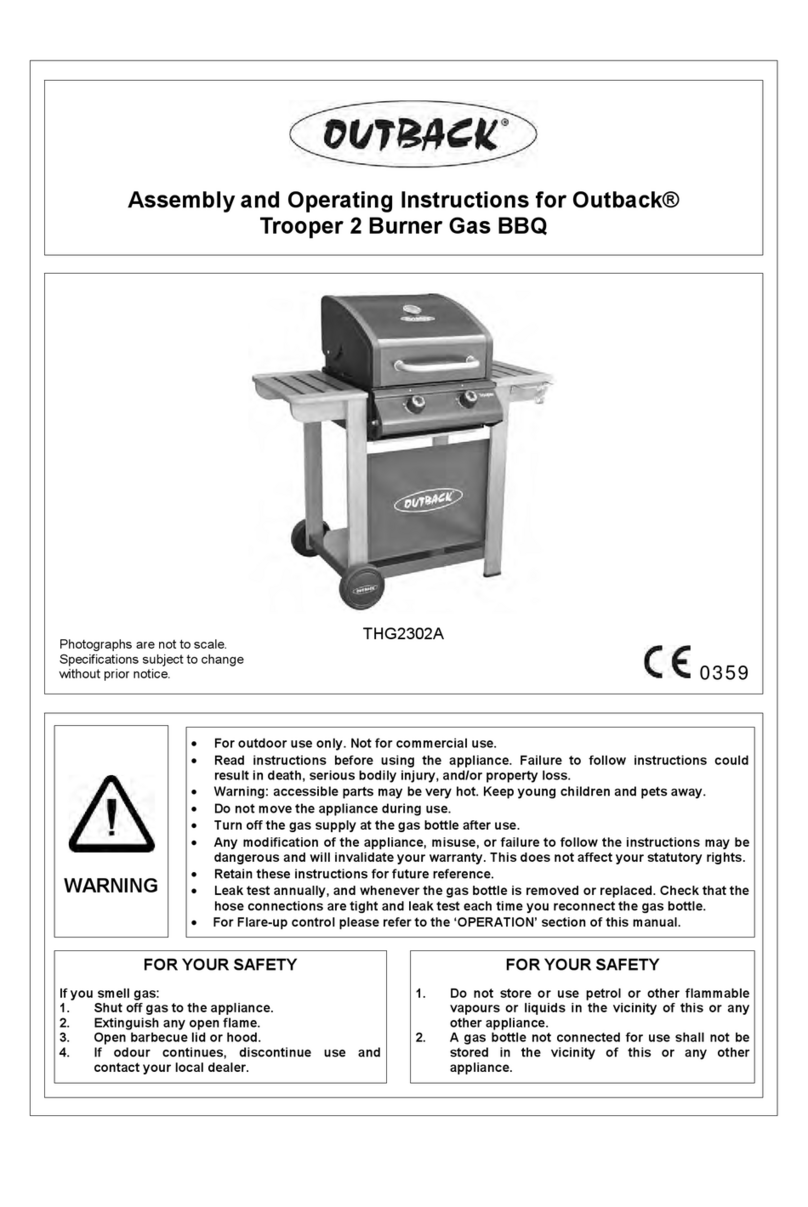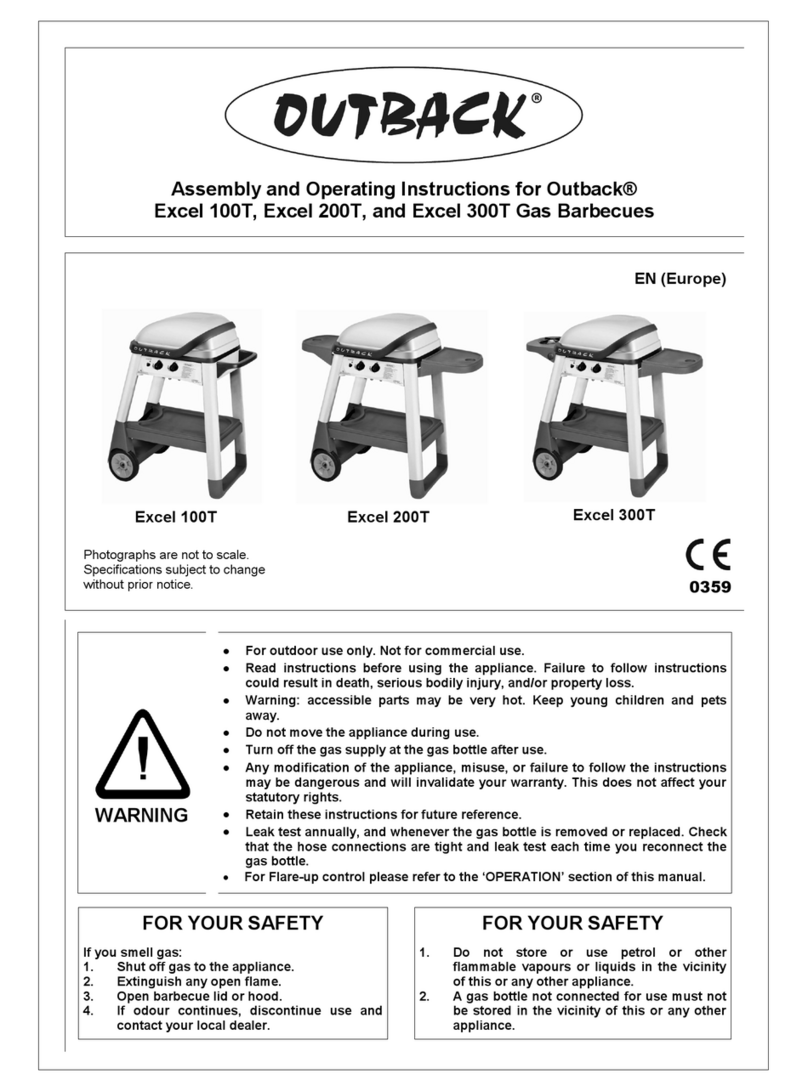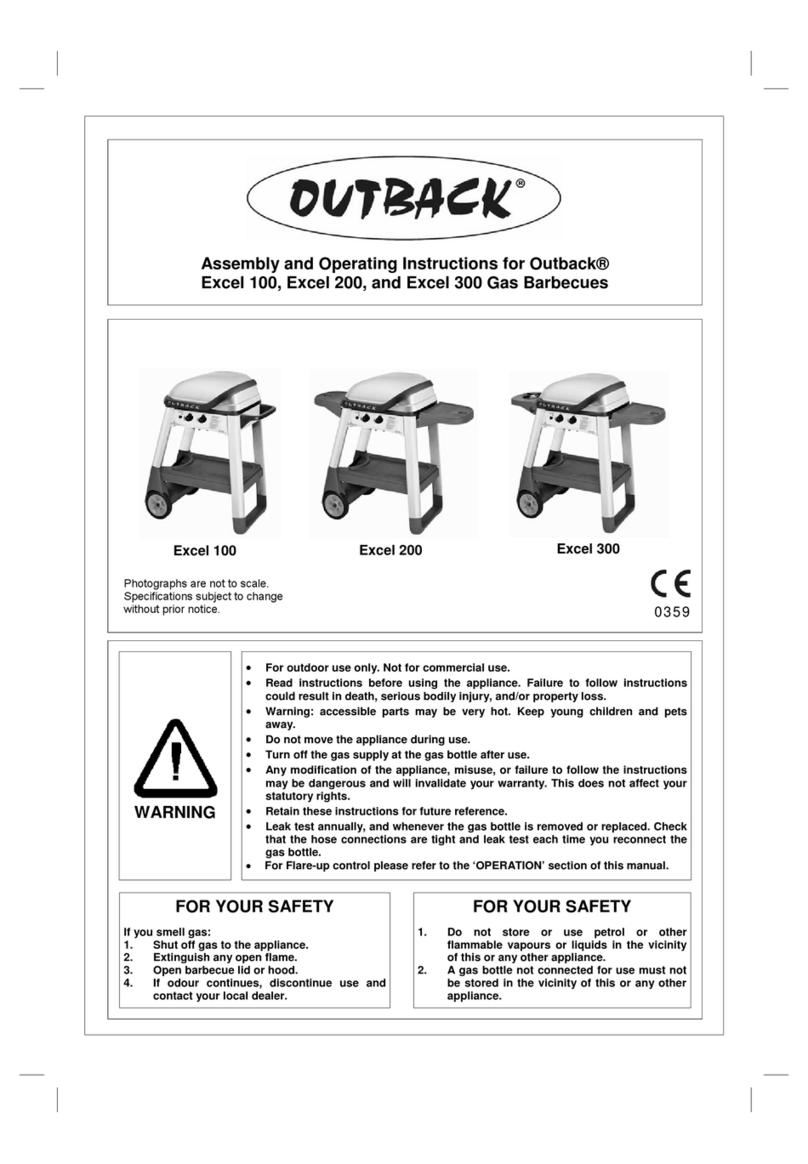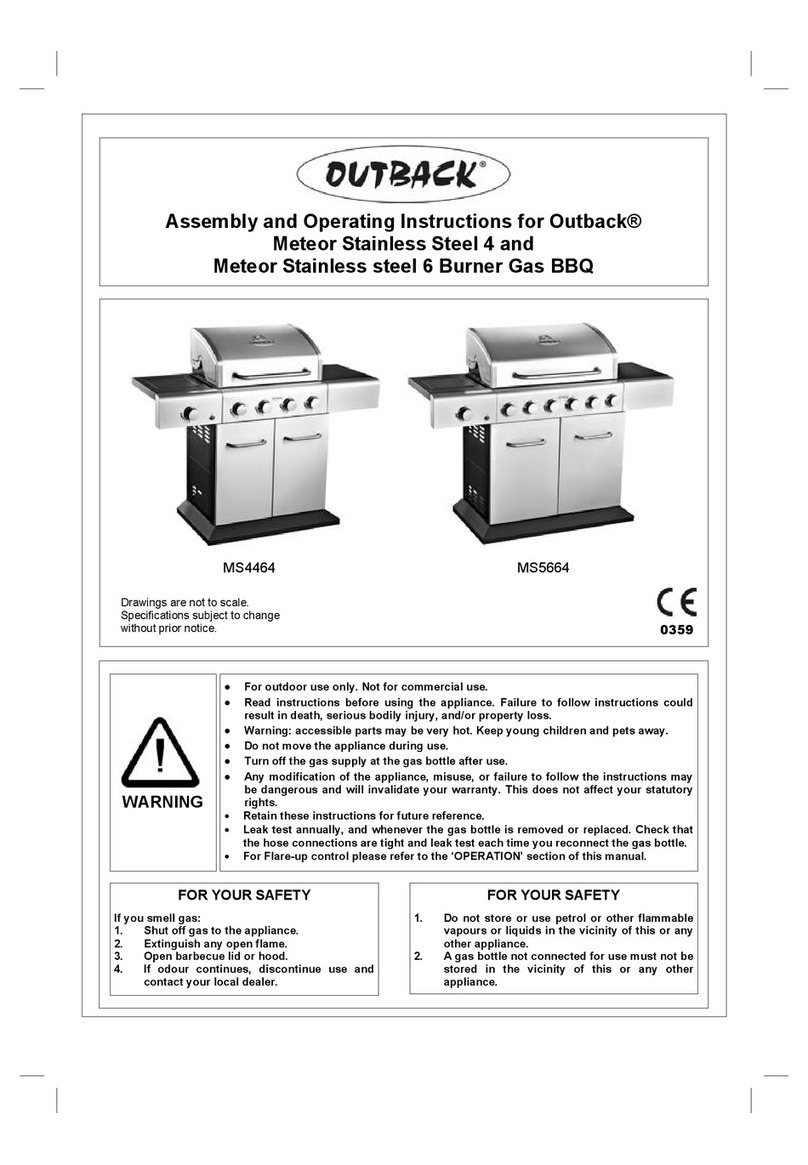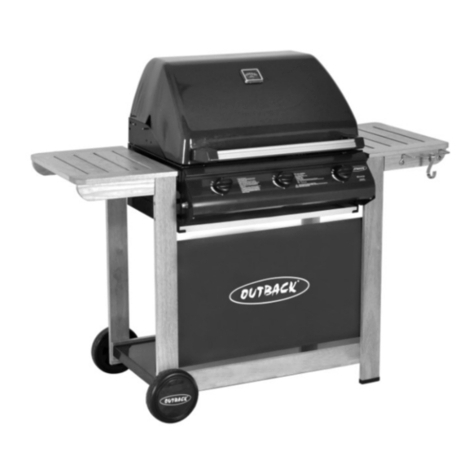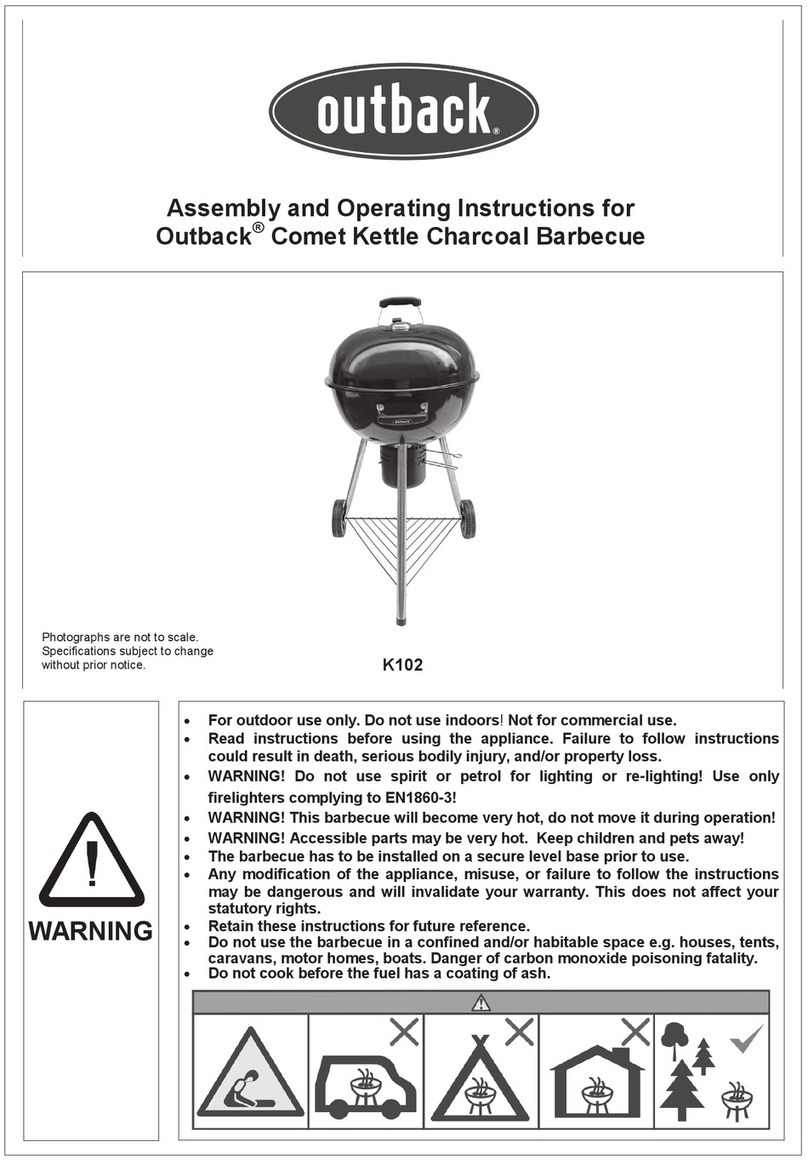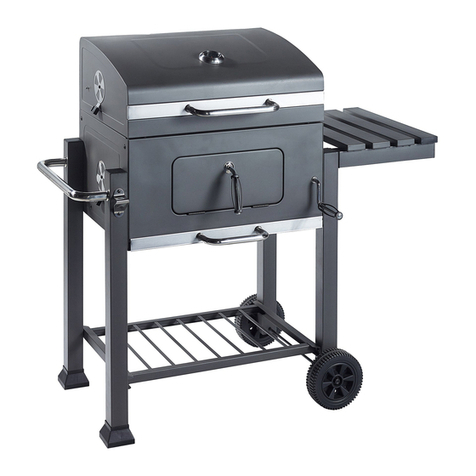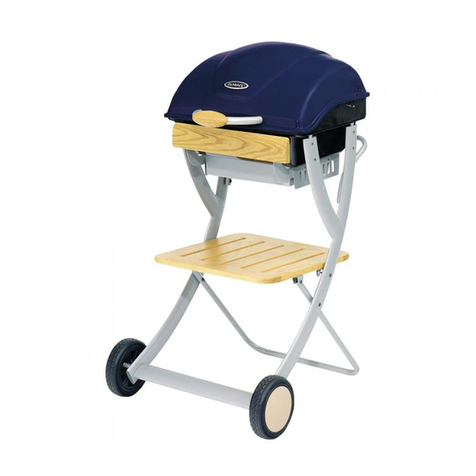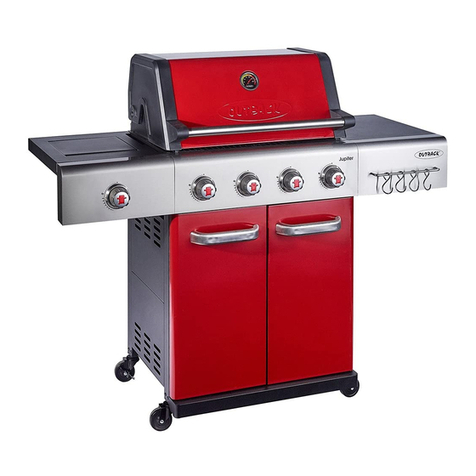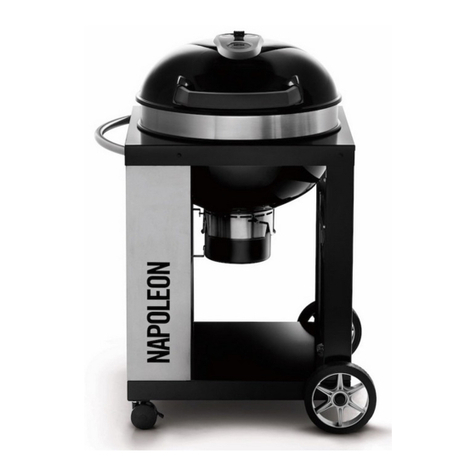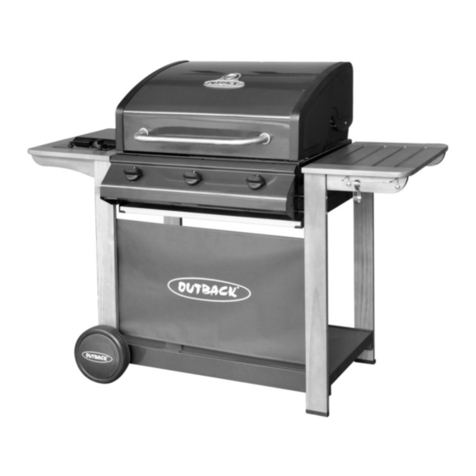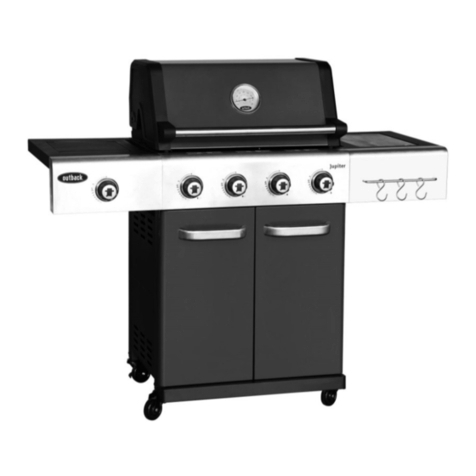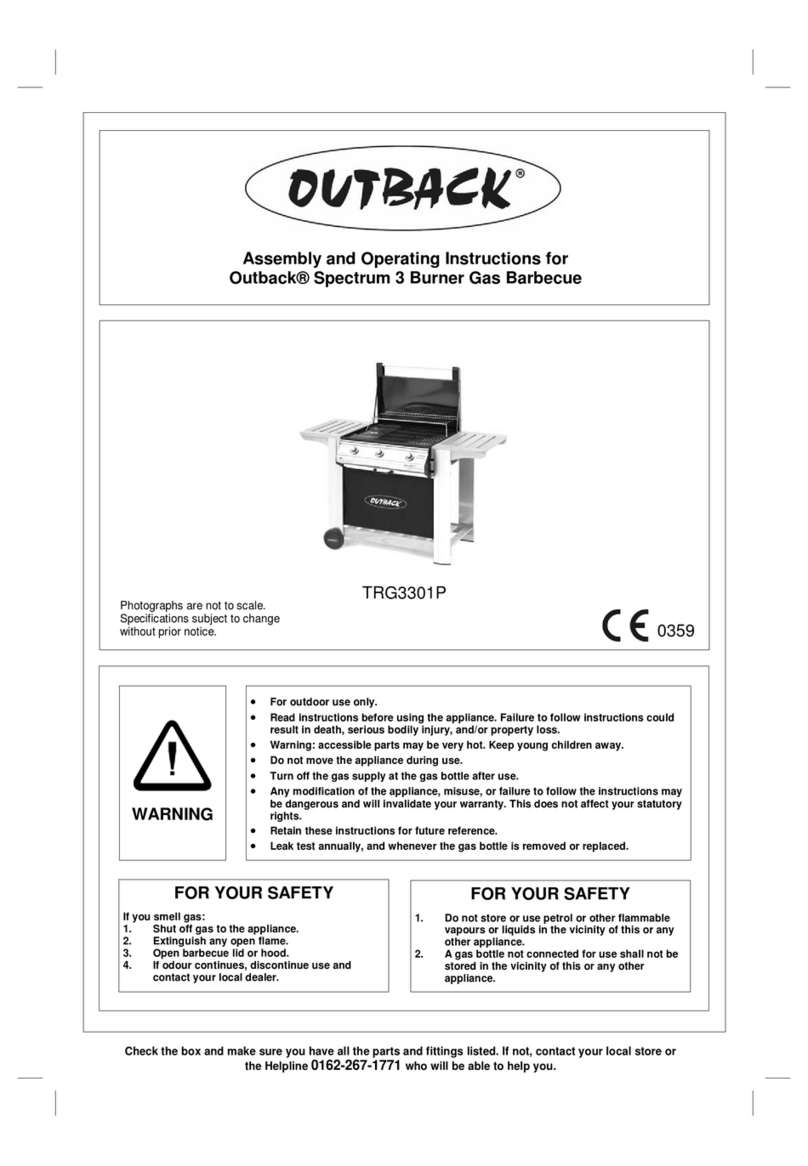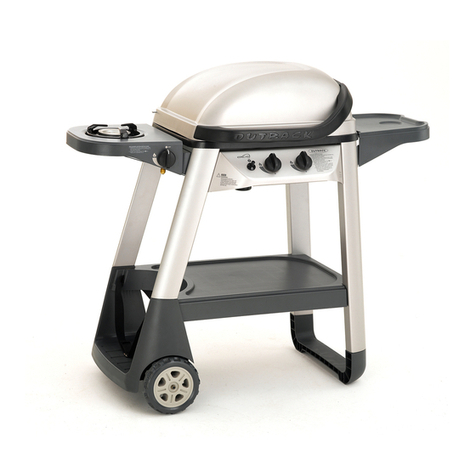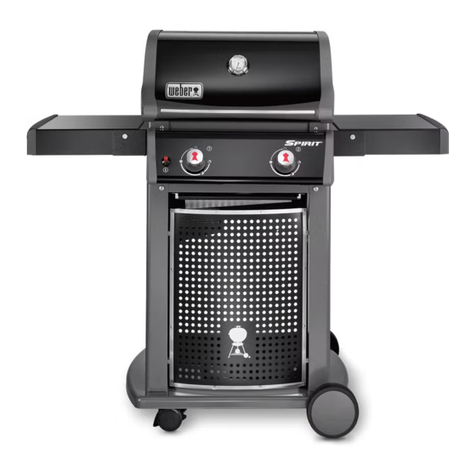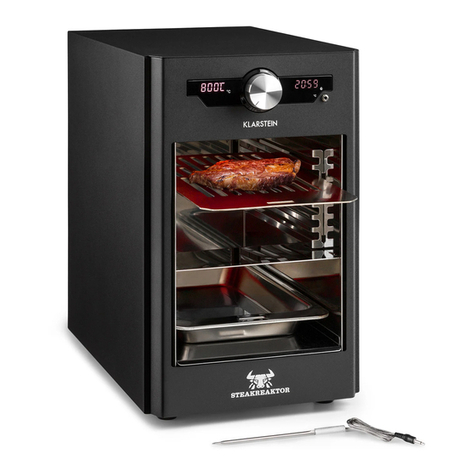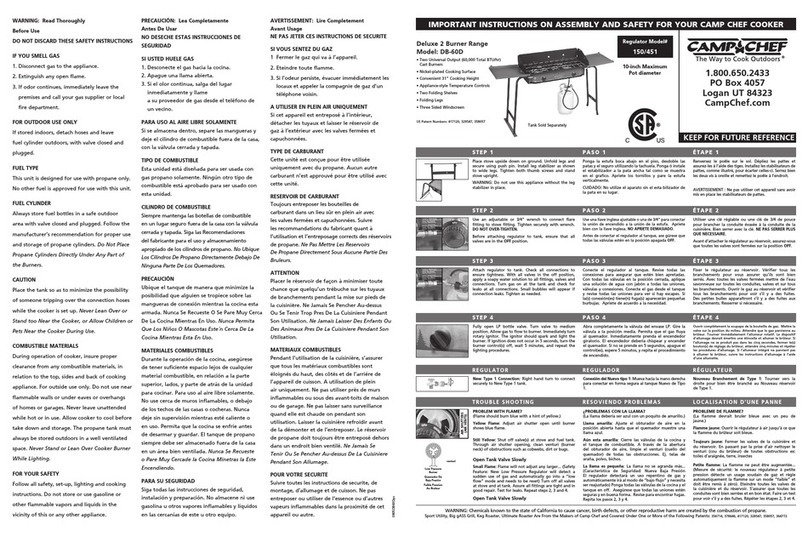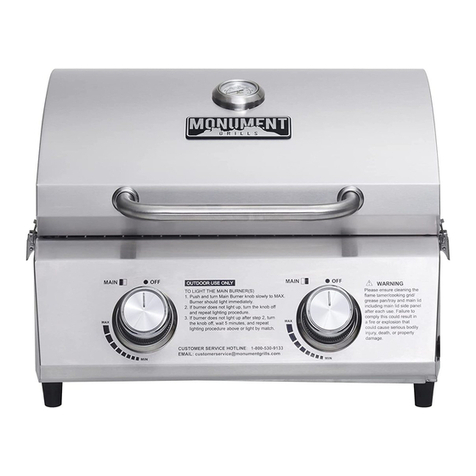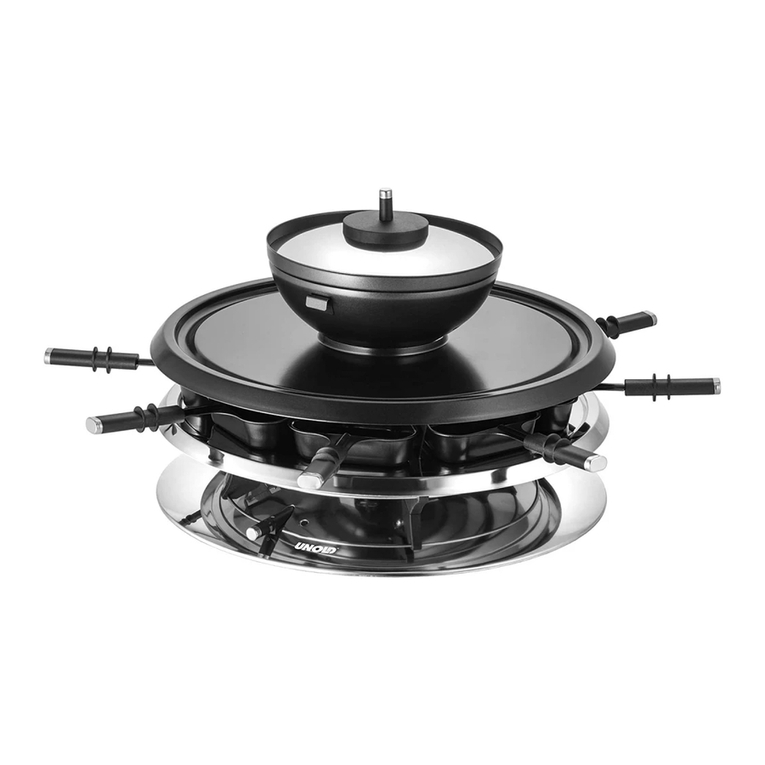
13
lighting hole on the right side of the
barbecue body and place near rightmost
burner porthole.
• Push and turn the rightmost control knob
anti-clockwise to the high position, taking
care to protect yourself from the flames.
• When the right burner is lit, turn the
remaining burners on from right to left.
• Confirm that each burner is alight before
turning on the next burner.
• If a burner fails to ignite, contact your local
dealer for assistance.
• After ignition, turn the burners to the high
position for 3-5 minutes in order to pre-heat
the barbecue. This should be done before
each cooking session.
• After completion of preheating, turn all
burners to the low position for best cooking
results.
Grill Cooking
The burners heat up the lava rock, underneath
the grill, which in turn heats the food on the grill.
The natural food juices produced during
cooking fall onto the lava rock below and
vaporise. The subsequent rising smoke bastes
the food, as it travels upwards, imparting that
unique barbecued flavour.
Griddle Plate Cooking
The burners heat the griddle plate directly,
which then cooks the food on contact. Griddle
plates allow for the cooking of smaller items,
such as seafood, which could fall through the
spaces of a grill. They are also suitable for
cooking items that require high-temperature/
short-duration cooking, such as vegetables and
smaller cuts of fish. Similarly, it can be used in
exactly the same way as a griddle in the
kitchen, for searing steaks, cooking eggs, etc.
Alternatively, it can be used for heating pans or
keeping food warm.
Warming Rack
Warming racks are a convenient way to keep
cooked food warm or to warm items such as
bread rolls. It is advisable to place food
(particularly fatty foods) to the front of the
warming rack to avoid the possibility of juices
and fat running down the back of your
barbecue. Always check that your warming rack
is properly fitted before use.
Flare-Up Control *Very Important*
Flare-ups occur when meat is barbecued, and
its fat and juices fall upon the hot lava rock.
Smoke of course helps give food its barbecued
flavour, but it is best to avoid excessive flare-up
to prevent food being burned. To control flare-
ups, it is ABSOLUTELY ESSENTIAL to trim
away excess fat from meat and poultry before
grilling, use cooking sauces and marinades
sparingly and try to avoid very cheap cuts of
meat or meat products as these tend to have a
high fat and water content. Also, the burners
should always be placed on the low setting
during cooking.
When flare-ups do occur, they can usually be
extinguished by applying baking soda or salt
directly onto the lava rock. Always protect your
hands when handling anything near the cooking
surface of the barbecue and take care to
protect yourself from the flames.
If a fat fire occurs, please see the instructions
given below.
Fat Fires
Empty and clean the drip tray and drip pan (and
foil liner, if applicable) of food debris after each
cooking session. If the barbecue is to be used
for large gatherings, it will be necessary to turn
off and cool the barbecue every two hours to
remove food debris from the drip tray and drip
pan (and foil liner, if applicable), and clean it
out. The time between cleaning may need to be
reduced if very fatty foods or cheap meat
products are being cooked. Failure to do this
may result in a fat fire, which may cause injury
and could seriously damage the barbecue.
In the event of a fat fire:
• If safe to do so, turn all control knobs to the
‘off’ position.
• Turn off the gas supply at the gas bottle.
• Keep everyone at a safe distance from the
barbecue and wait until the fire has burnt
out.
• Do not close the hood or lid of the barbecue.
• NEVER DOUSE A BARBECUE WITH
WATER. IF AN EXTINGUISHER IS USED,
IT SHOULD BE A POWDER TYPE.
• DO NOT REMOVE THE DRIP TRAY.
• If the fire does not seem to be abating or
appears to be worsening, contact your local
Fire Brigade for assistance.
End of Cooking Session
After each cooking session, turn the barbecue
burners to the “high” position and burn for 5
minutes. This procedure will burn off cooking
residue, thus making cleaning easier. Make


















